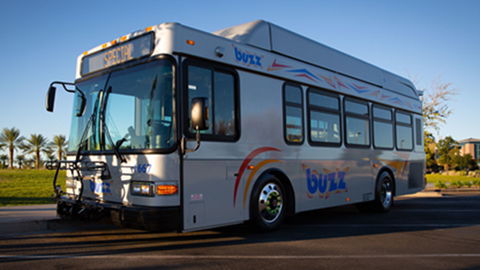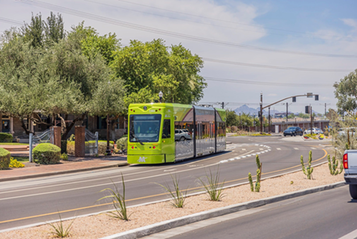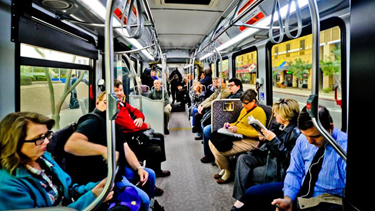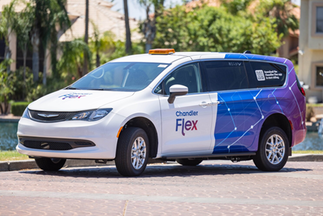Why should we invest in and continuously improve public transportation?
June 6, 2024
Transportation impacts many aspects of day-to-day life. It not only helps us get where we need to go, it also impacts cost of living, environmental quality, and health. Public transportation options such as bus, light rail, streetcar, and paratransit provide affordable mobility options that allow individuals to get to work or school as well as access basic needs such as health care, food, and recreation. This is especially true for those that do not own a car or those that are physically impaired or immobile. The question is, how well does our public transportation system work for people?
The Mesa Public Transit Project was a community engagement effort led by Pinnacle Prevention in 2023 to better inform transit, land use, and development decisions in the City of Mesa, however, the project’s findings can also benefit other parts of the greater Phoenix region.
Partnership with A New Leaf, Aster Aging, Concordia Charter School, Lutheran Social Services of the Southwest, and Native health as well as ten members of the Mesa community which comprised a community advisory board called “The Transit Team” helped shape the engagement process. Through key stakeholder interviews and a series of seven community conversations, we spoke with over 70 Mesa residents about their experiences moving around Mesa and other parts of the Valley.
What did we find out?An array of transportation options, including a high-quality public transportation system and walking and biking options, are necessary to move the large population of residents and visitors throughout Maricopa County on any given day.Quality public transit systems, while associated with major urban centers, can help preserve a small-town feel in all cities and neighborhoods. People like to live near places where they shop, play, and learn. Providing easy access to everyday destinations through a network of public transit and safe streets helps foster more community connection and combats social isolation.More people want to try public transit, but navigating the system can be stressful. From buying your ticket to planning your ride to switching routes, the process can be intimidating. A greater variety of resources from cities and transit authorities can help people feel more confident to take their first ride. Local organizations and agencies can partner with transit agencies to help spread the word.For regular public transit users, the cost of transit can add up over the course of weeks or months. Combined with the ever-increasing costs of housing and food, ensuring that public transit remains affordable is critical. Reduced-fare programs can help, but not everyone is eligible.Free neighborhood circulators provided by cities such as the Tempe Orbit, Mesa Buzz, Phoenix MARY, and Glendale Urban Shuttle are valued by residents. Increasing public interest in on-demand neighborhood transit vans such as Chandler Flex and Avondale WeRide is something cities should be paying attention to.To help riders feel secure and comfortable onboard transit, staff such as operators/drivers, security guards, and transit customer experience coordinators should be well trained in trauma informed approaches and de-escalation to best assist individuals in need and to help ensure a positive transit experience for all riders.To help riders feel secure and comfortable offboard transit, cities should perform strategic investments to build and improve bus shelters. Shade helps protect people from extreme heat and other weather events. Lighting improves perceptions and experiences of safety.
Valley Metro is working hard with city governments to increase transit ridership levels, which have fallen since the pandemic. Transit professionals also recognize the need to improve access, efficiency, and customer satisfaction. The voices and experiences of your organization and its clients matter.Co-host transit education events to educate individuals about how to use transitAs Valley Metro rolls out its fare modernization program, help those with appropriate technology download and get started with the Valley Metro AppEngage in local and regional transit planning processes to weigh in and make your voices heardAdvocate for transit-oriented communities. Transit oriented communities differ from transit-oriented development, which is more focused on economic development than overall connections to and within communities.Vote for programs that invest in the future of our transit systemThe full Mesa Public Transit Project report describes the process and findings of the project in more detail. The study includes 27 recommendations about how to improve public transit in the east valley and beyond. Click here to get your copy!




